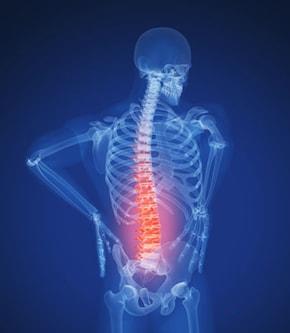Herniated Disks - A Real Pain in the Back
What is a herniated disC?
A herniated disc results when one of the small, spongy disks between your spinal vertebrae becomes damaged. These discs act as cushions between the vertebrae, absorbing shock and keeping the spine flexible. The damaged disc may bulge or break open, compressing the nerves.
 Symptoms:
Symptoms:
- Neck pain
- Shoulder pain
- Arm pain
- Lower back pain
- Hip pain
- Leg pain
- Numbness or tingling
- Weakness
Causes
A herniated disc may be caused by the general wear and tear of aging or by a spinal injury.
Treatment
For nine out of 10 people, conservative treatment relieves symptoms in just a few weeks or months.
- Medications – Painkillers or anti-inflammatory medications may be used to help reduce and relieve pain and swelling. Muscle relaxants help with the spasms that may occur.
- Therapy – Physical therapists/chiropractic therapists may use the following techniques to reduce pain: exercise, massage, traction, heat or ice, ultrasound or electrical stimulation.
- Steroid injections – Anti-inflammatory or pain-suppressing injections, such as epidural injections, nerve block injections or facet injections, may also be used.
Benefits of surgery
If conservative treatments do not improve patient symptoms or if there are any defects to the nervous system, then surgery should be discussed. Factors such as age, overall health and severity and impact of the symptoms are taken into consideration.
The disk rarely has to be removed completely. The most common technique is a lumbarmicrodiscetomy. During this procedure, the surgeon removes a portion of the bone to allow access to the nerve tunnel, removes part of the disk that is compressing the nerve and opens up the tunnel for the nerve to run through. The surgery is performed in a minimally invasive manner, allowing fewer complications and a speedier recovery time. Typically performed as an outpatient procedure, the estimated recuperation time is four weeks.

